SLUS714E January 2007 – June 2019 TPS40077
PRODUCTION DATA.
- 1 Features
- 2 Applications
- 3 Description
- 4 Revision History
- 5 Pin Configuration and Functions
- 6 Specifications
-
7 Detailed Description
- 7.1 Overview
- 7.2 Functional Block Diagram
- 7.3
Feature Description
- 7.3.1 Minimum Pulse Duration
- 7.3.2 Slew Rate Limit On VDD
- 7.3.3 Setting The Switching Frequency (Programming The Clock Oscillator)
- 7.3.4 Loop Compensation
- 7.3.5 Shutdown and Sequencing
- 7.3.6 Boost and LVBP Bypass Capacitance
- 7.3.7 Internal Regulators
- 7.3.8 Power Dissipation
- 7.3.9 Boost Diode
- 7.3.10 Synchronous Rectifier Control
- 7.4 Programming
-
8 Application and Implementation
- 8.1 Application Information
- 8.2
Typical Applications
- 8.2.1
Buck Regulator 8-V to 16-V Input, 1.8-V Output at 10 A
- 8.2.1.1 Design Requirements
- 8.2.1.2
Detailed Design Procedure
- 8.2.1.2.1
Power Train Components
- 8.2.1.2.1.1 Output Inductor, LOUT
- 8.2.1.2.1.2 Output Capacitor, COUT, ELCO and MLCC
- 8.2.1.2.1.3 Input Capacitor, CIN ELCO and MLCC
- 8.2.1.2.1.4 Switching MOSFET, QSW
- 8.2.1.2.1.5 Rectifier MOSFET, QSR
- 8.2.1.2.1.6 Timing Resistor, RT
- 8.2.1.2.1.7 Feed-Forward and UVLO Resistor, RKFF
- 8.2.1.2.1.8 Soft-Start Capacitor, CSS
- 8.2.1.2.1.9 Short-Circuit Protection, RILIM and CILIM
- 8.2.1.2.1.10 Boost Voltage, CBOOST and DBOOST (Optional)
- 8.2.1.2.1.11 Closing the Feedback Loop, RZ1, RP1, RPZ2, RSET1, RSET2, CZ2, CP2, and CPZ1
- 8.2.1.2.1
Power Train Components
- 8.2.1.3 Application Curves
- 8.2.1
Buck Regulator 8-V to 16-V Input, 1.8-V Output at 10 A
- 8.3 Additional System Examples
- 9 Layout
- 10Device and Documentation Support
- 11Mechanical, Packaging, and Orderable Information
Package Options
Mechanical Data (Package|Pins)
- PWP|16
Thermal pad, mechanical data (Package|Pins)
Orderable Information
6.5 Typical Characteristics
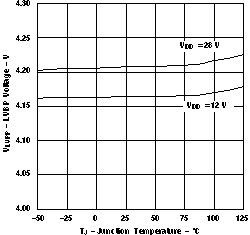 Figure 1. LVBP Voltage vs Junction Temperature
Figure 1. LVBP Voltage vs Junction Temperature 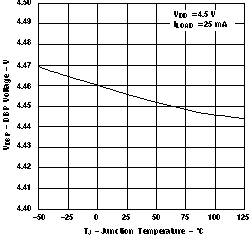 Figure 3. DBP Voltage vs Junction Temperature
Figure 3. DBP Voltage vs Junction Temperature 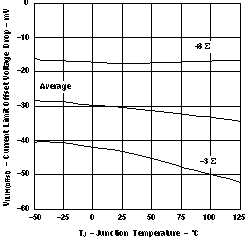 Figure 5. Current Limit Offset Voltage
Figure 5. Current Limit Offset Voltage
vs Junction Temperature
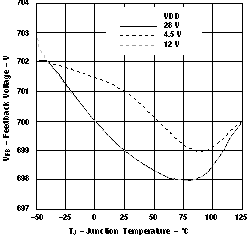 Figure 7. Feedback Regulation Voltage
Figure 7. Feedback Regulation Voltage
vs Junction Temperature
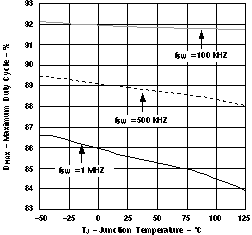 Figure 9. Maximum Duty Cycle
Figure 9. Maximum Duty Cycle
vs Junction Temperature
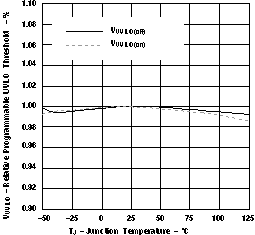 Figure 11. Programmable UVLO Threshold
Figure 11. Programmable UVLO Threshold
vs Junction Temperature
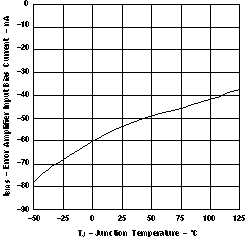 Figure 13. Error Amplifier Input Bias Current
Figure 13. Error Amplifier Input Bias Current
vs Junction Temperature
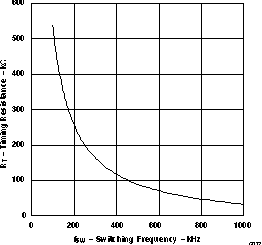 Figure 15. Switching Frequency
Figure 15. Switching Frequency
vs Timing Resistance
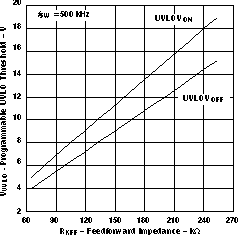 Figure 17. Undervoltage Lockout Threshold
Figure 17. Undervoltage Lockout Threshold
vs Feed-Forward Impedance
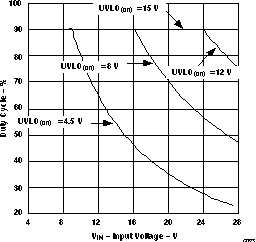 Figure 19. Typical Maximum Duty Cycle
Figure 19. Typical Maximum Duty Cycle
vs Input Voltage
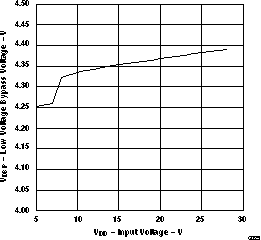 Figure 21. Input Voltage vs Low-Voltage Bypass Voltage
Figure 21. Input Voltage vs Low-Voltage Bypass Voltage 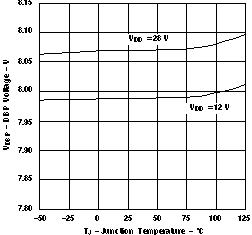 Figure 2. DBP Voltage vs Junction Temperature
Figure 2. DBP Voltage vs Junction Temperature 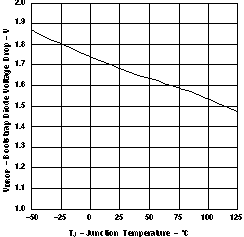 Figure 4. Bootstrap Diode Voltage
Figure 4. Bootstrap Diode Voltage
vs Junction Temperature
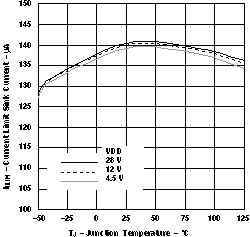 Figure 6. Current Limit Sink Current
Figure 6. Current Limit Sink Current
vs Junction Temperature
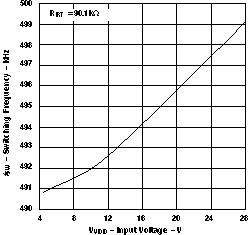 Figure 8. Switching Frequency vs Input Voltage
Figure 8. Switching Frequency vs Input Voltage 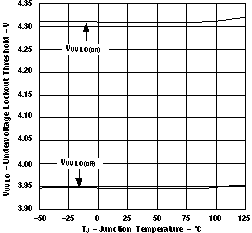 Figure 10. Undervoltage Lockout
Figure 10. Undervoltage Lockout
vs Junction Temperature
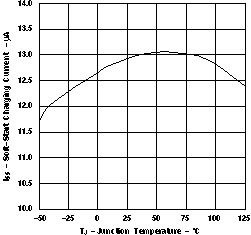 Figure 12. Soft-Start Charging Current
Figure 12. Soft-Start Charging Current
vs Junction Temperature
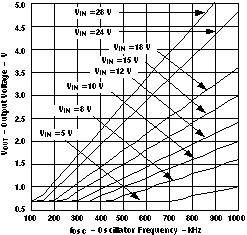 Figure 14. Minimum Output Voltage vs Frequency
Figure 14. Minimum Output Voltage vs Frequency 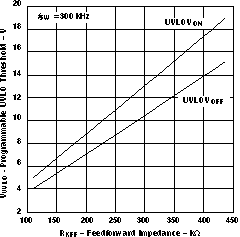 Figure 16. Undervoltage Lockout Threshold
Figure 16. Undervoltage Lockout Threshold
vs Feed-Forward Impedance
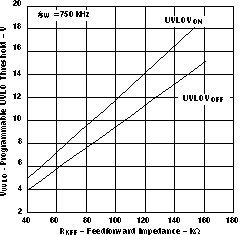 Figure 18. Undervoltage Lockout Threshold
Figure 18. Undervoltage Lockout Threshold
vs Feed-Forward Impedance
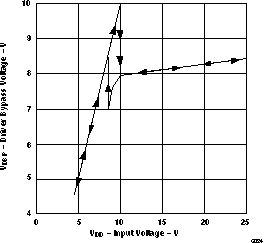 Figure 20. DBP Voltage vs Input Voltage
Figure 20. DBP Voltage vs Input Voltage